|
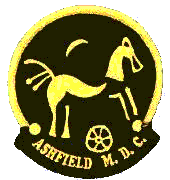
| |
COIN OF THE YEAR AWARD 2008 - 2009 |
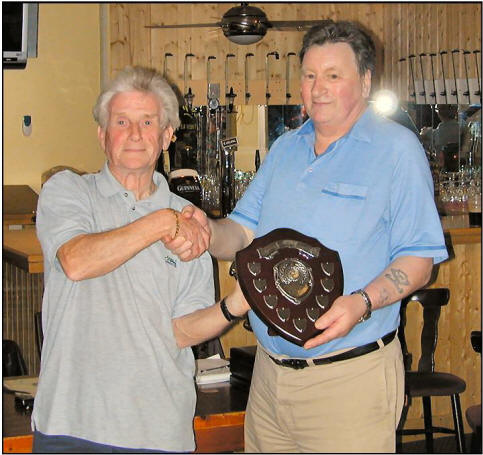 |
The club chairman, Dennis Brown, shown presenting Graham Reedman
with the Find of the Year shield for the best coin found on a club
search during the 2008/2009 club year.
The award was for a hammered silver penny of either Stephen or
Matilda (the jury is still out on this) minted during the Civil War
and Anarchy, 1138—1153. |
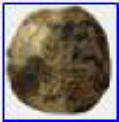 |
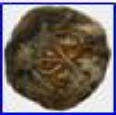 |
ARTEFACT OF THE YEAR AWARD 2008 -
2009
|
|
The Artefact of the Year award was presented by the club chairman to
Darren Hoyle for his find of a lifetime a 15th., century gold
padlock.
The padlock is “Treasure” and as such is subject to the
provisions of the “Treasure Act”, it is at present being valued.
Reports in more detail about the padlock’s discovery can be
found in the Summer 2008, club newsletter or in an article by John
Radford in the December 2008 issue of the Searcher magazine.
It is shown here with a five pence to give an idea of how small the
lock is. |
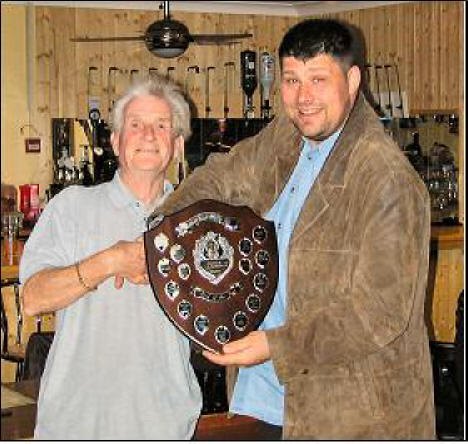 |
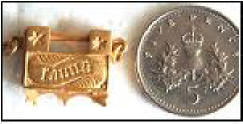 |
Find Of The Month March
Coin:- Joint John
Radford and David Hallam. Artefact:- Jonathan Bryant. |
 |
 |
 |
|
Edward 1 silver
hammered penny,
found by John Radford.
|
Elizabeth 1
sixpence 1583,
found by David Hallam.
|
Roman Fibula,
found by Jonathon Bryant.
|
Find Of The Month April
Coin:- John
Radford. Artefact joint:- John Radford. and Caroline Crabtree |
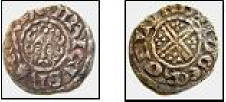 |
 |
 |
|
Henry111 short
cross silver hammered penny, found by John Radford.
|
Joan of Arc
badge,
found by John Radford.
|
Trade Union
badge,
found by Caroline Crabtree.
|
Find Of The Month May
Coin:- Dennis Brown. Artefact Dennis Brown. |
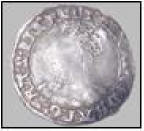
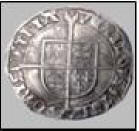 |
Mary silver groat,
found by Dennis Brown.
Silver fob,
found by Dennis Brown |
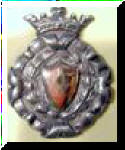
 |
Find Of The Month June
Coin:- Dave Rhodes. Artefact John Radford. |
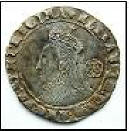
 |
Elizabeth1 silver shilling,
found by Dave Rhodes.
Crotal bell,
found by John Radford. |
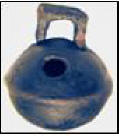
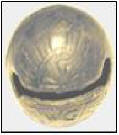 |
Find Of The Month July
Coin:- Roger Bacon. Artefact Dennis Brown. |

 |
Charles1 shilling,
found by Roger Bacon.
Celtic dress pin,
found by Dennis Brown |
 |
Other finds during the period |
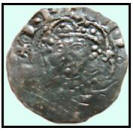 |
Henry 1. silver hammered penny,
quadrilateral on cross fleury type. 1126—1126.
Found by Mary Severn.
(Seaby Standard Catalogue of British Coins 1276)
|
 |
|
 |
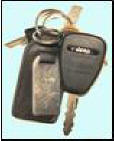 |
 |
 |
| Cross
|
Car keys |
Philip and Mary groat 1554 - 1558 |
Two leaden tokens |
| Norman Daynes |
Dave Hallam |
Bust of Mary. |
John Radford |
| |
|
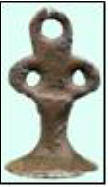 |
 |
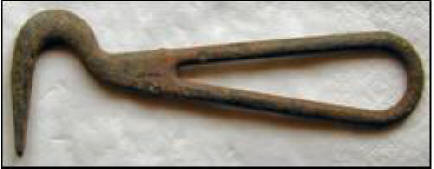 |
|
17th. century seal matrix,
found by John Gough |
Tool for extracting stones from the hooves of
horses,
found by June Reedman. |
| |
ANNUAL CLUB RALLY
BEST NATURAL FIND AWARD
|
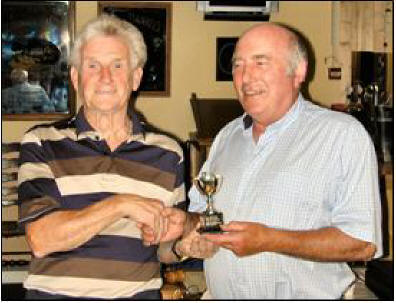 |
Club Chairman, Dennis Brown, presenting Bill Severn with the
cup for winning the Best Natural Find on the club annual
rally.
Bill won the award with his open ended thimble illustrated
below.
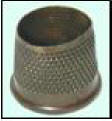
|
DETECTORIST OF THE YEAR AWARD
|
|
A new award has been introduced to the club, it is for
the club Detectorist of the Year. The winner of the
award is decided by the total number of points gained in
the Find of the Month from April to March each year.
This year two members, John Wardle and John Radford,
gained the same number of points, they both shared the
award. The chairman is shown presenting them with their
certificates.
|
 |
DETECTING BONUS.
|
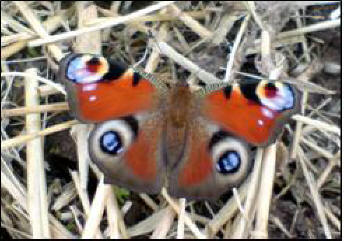 |
Thought this might be interesting for the newsletter, had it
follow me about the field on a club search at ……. in July so I
had to take a photograph. It is a Peacock butterfly (Inachis
io) wingspan 2 3/8" or 60mm, The "eyes" are a means of defence,
when disturbed by a predator it opens and closes it's wings
rapidly displaying the eyes to frighten it off. I think this one
was taking advantage of a rest in the sun after the previous
days rain.
John Radford.
|
|
PART TWO
MASONIC
TOKENS
by Priscilla Langridge |
|
At the turn of the century Masonic bodies began to show an
awakening interest both in forming collections and in
designing new specimens for use in the Chapters. Die sinkers
and manufacturers issued fine examples. The usual metal in
which these pennies are struck is copper but which is
sometimes bronzed. There are also
silver, copper, aluminium,
copper and brass, copper and nickel and even rare examples
in gold to be found.
The building of Solomon's
Temple is perhaps the quintessence of Masonry. It is both
significant of the gaining of knowledge of the physical
world, and of making the body a temple by the culture
The degree of Masonry: the
‘Entered a Apprentice’ signifies a beginning to learn.
Then comes the Fellow-craft, which signifies
something learnt and applied under the direction of a
Master. The degree of Master implies a capability to teach
or to direct instruction. The Royal Arch completes the
philosophic character, and is the acme of the Masonry of the
Grand Lodge. The Templar degrees of the Christian orders can
only add a new form of the allegory. To all Masons God is
considered the Great Architect of the Universe and the Sun
represents His illuminating glory. 'Free and accepted
Masons' is a term taken from medieval times. Persons were
then 'admitted', 'accepted’ and 'made free', 'entered' of
the guild. The word 'accepted’
probably dates back
to the old Operative Craft 'Chapters' and Lodges. In England
the first Mother Grand Lodge of the world was inaugurated in
London in 1717. Early lodges were first known by the name of
the sign of the house where they met. Towards the middle of
the 18th century the lodges began to assume the names of the
virtues, the graces, and of persons.
The club thanks Priscilla Langridge for
allowing us to publish her article about Masonic Tokens.
*** |
MASONIC MARK PENNIES (Continued)
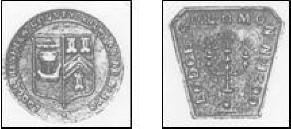
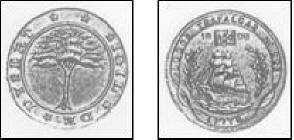
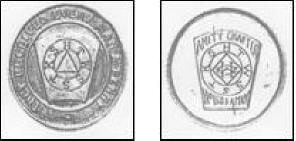
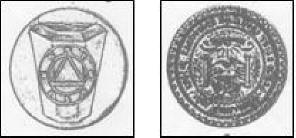 |
BOMB DISPOSAL TALK
|
|
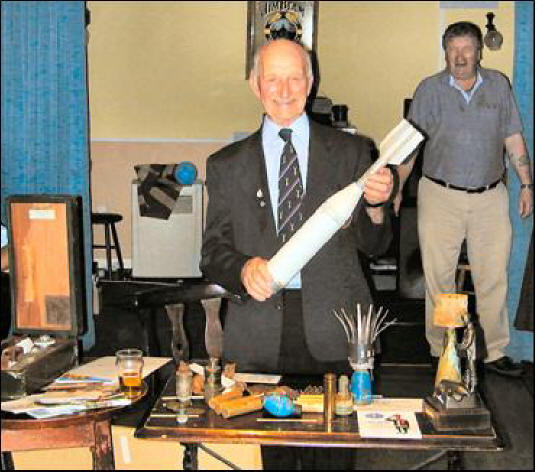 |
|
A talk about bomb disposal and the use of the oil
extracted from Duke’s Wood, Eakring, was given by Kevin
Topham at the August club meeting. Kevin is the curator
of the Duke’s Wood Oil Museum which is open every Sunday
and by appointment weekdays. Details of the Oil Museum
and Duke’s Wood Nature Reserve can be obtained from
www.DukesWoodoilmuseum.co.uk or from Kevin on 01623
882446.
The talk was very interesting and gave club
members an understanding of the risks faced by the brave
servicemen who place their lives on the line dealing
with all types of explosive devices.
Remember when metal detecting to
treat any finds of live rounds or explosive devices with
caution and if necessary inform the police.
Most club members were surprised with the
importance of the oil extracted by the Duke’s wood
’Nodding Donkeys’ to the war effort. The oil was of a
superior quality and proved to be perfect for use by
Rolls Royce Merlin engines used by the R.A.F. at that
time in high performance fighters and bombers. |
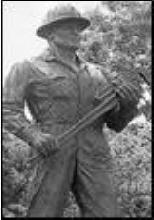 |
OIL PATCH WARRIOR
A
seven foot statue in bronze, ‘The Oil Patch Warrior’
was created by the artist Jay O’Melia. An
identical statue is at Ardmore, Oklahoma.
NODDING DONKEY
Richard Attenborough stands beside a Duke’s Wood,
‘Nodding Donkey’ in 1988.
(Pictures
from the Duke’s Wood Oil Museum
and
Nature Trail brochure.
|
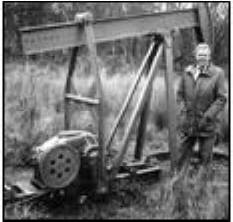 |
In search of Whinbush Steve
AMDC
car boot search
Thursday 9th
July 2008
An old
pagan Saxon called Steve
In Christianity he tried to believe
So with a cross he was buried
But river Styx he was ferried
And left behind this I retrieved.

(‘Tis a buckle!)
King of
Whinbush he was known,
For that was his home,
Later used for a car boot sale
We found lots of things
But nowt lost by Kings
So we went to the pub for an ale.
OR
So that is the end of this tale.(please
yourselves)
John Radford |
MIKE FINDS HIS FIRST HAMMERED
|
|
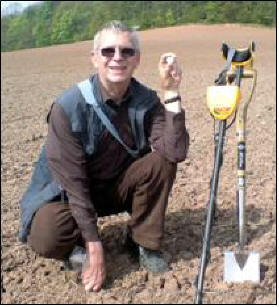
A very happy Mike Tyndall is shown here on a
club search holding the Charles 1 silver
hammered shilling he has just found. Mike found
the coin on only his second club search.
 |
A CUT CNUT!
|
|
 |
|
This
cut quarter was found by David Hallam on a
club search.
The illustration shows where the quarter
would have been cut from the whole coin.
Son of Swegn Forkbeard, King of Denmark Cnut
was acclaimed King by the Danish fleet in
England in 1014 but he was forced to leave.
He returned in 1015 and in 1016 he agreed to
a division of the country with Eadmund
Ironsides the son of Aethelred. On the death
of Eadmund in November 1016 Cnut secured all
England by marrying Emma of Normandy, the
widow of Aethelred. |
BOOKS
|
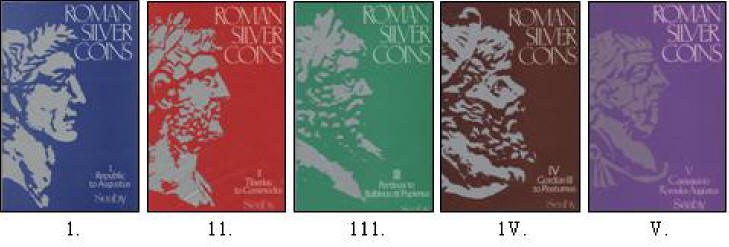 |
|
The choice of book for this issue of the
club newsletter is not one but a set of
five books.
ROMAN
SILVER COINS.
Published by Seaby.
Volume 1 lists the silver issues of the
Roman Republic from the 3rd., century
BC., through the Imperatorial period and
ends with Augustus, the first emperor of
Rome. The coins are in the alphabetical
order of the families who issued them.
It has 166 pages with 748 photographic
illustrations.
Volume 11.
Listing every known type and variety of
silver coin issued by the Roman emperors
Tiberius through Commodus (AD 14 - 192).
It has 258 pages with 573
photographic illustrations.
Volume 111. Listing every known type and
variety of silver coin issued by the
Roman emperors Pertinax through Balbinus
and Pupienus (AD 193 - 238).
It has161 pages with 382 photographic
illustrations.
Volume 1V.
Listing every known type and variety of
silver and billon coin issued by the
Roman emperors Gordian III through
Gallienus and the Gallic usurper
Postumus (AD 238 - 268).
It has 137 pages with 255
photographic illustrations.
Volume V, the last in the series.
Listing every
known type and variety of silver coin
issued between the coinage reform of
Diocletian (AD 284 - 305) and the issues
of the British usurper Carausius (AD
286/7 - 293) through the deposition of
Romulus Augustus in the West (AD 476)
and the death of the eastern emperor
Zeno (AD 491).
It has 214 pages with 295
photographic illustrations.
An invaluable set
of reference books they cost me about
£50 when I bought them in the late
1980s. A set offered by numibook on the
internet is priced at £125.
Unfortunately with the policy of the
charity shops to
cherry pick donated books, the
chances of coming across any decent coin
books in a charity shop is remote.
*** |
|
BUSTS OF ROMAN EMPERORS ON COINS
THAT MAY BE FOUND IN BRITAIN
(1) |
 |
AUGUSTUS 27
B.C.
—
A.D.
14
CAIUS
OCTAVIUS THURINUS was born in Rome
in 63 B.C. the great nephew and heir
of Julius Caesar. Octavian, as he
was now called, with Mark Antony and
Lepidus defeated Brutus and Cassius
at the battle of Philippi. He then
defeated Mark Antony and Cleopatra
at the battle of Actium in 31 B.C.
to become, at the age of 33, sole
master of the Roman Empire. He was
granted the title ‘Augustus’ which
became his name. He died at the age
of 77
in A.D. 14
His stepson Tiberius was his
successor.
TIBERIUS
A.D.
14 — 37
TIBERIUS CLAUDIUS NERO was born in
42 B.C. the oldest son of Tiberius
Claudius Nero and Livia. His father
had fought against Octavian and in
40 B.C. fled to Greece. However he
returned to Rome the following year
and was forced to divorce his wife
Livia so that Octavian could marry
her. Tiberius then became the
stepson of Octavian. He succeeded
Augustus in A.D. 14 becoming a good
administrator until he retired to
Capri in A.D. 26 He died aged 78 in
A.D. 37.
The crucifixion of Jesus Christ
happened during his reign. His
successor was Caligula.
CALIGULA
A.D.
37 — 41
CAIUS
CAESAR was born at Antium in A.D.
12, the youngest son of Germanicus
and Agrippina Senior. He was
nicknamed Caligula by the soldiers
because as a small child he wore a
miniature uniform of a private
soldier together with the half boot,
caligula. He succeeded Tiberius in
A.D. 37. At first he was a good
emperor but later that year had a
nervous breakdown that led to
cruelty, oppression and personal
depravity. He was assassinated in
A.D. 41.
Claudius succeeded him.
CLAUDIUS
A.D.
41 — 54
TIBERIUS CLAUDIUS DRUSUS was born in
10 B.C. Despite his high birth he
was kept out of the public eye due
to his disability, thought to be
cerebral palsy. His mental abilities
did not seem to have been impaired
and he proved to be a good
administrator. In A.D. 43 he ‘took
part’ in the invasion of Britain and
the occupation that lasted until the
fifth century. He married Agrippina
Junior in A.D. 49 and adopted her
son, Nero. Claudius died in A.D. 54
thought by a poison placed on a
succulent mushroom by Agrippina. His
stepson Nero succeeded him.
NERO
A.D.
54 — 68
LUCIUS
DOMITIUS AHENOBARBUS after his
adoption by Claudius became Nero
Claudius Caesar Drusus Germanicus
and was made emperor in A.D. 54, at
the age of 16. At first, under
guidance he ruled wisely however he
took up the reigns of power himself
in A.D. 62. His extravagance and
vanity became unbridled. He is
mainly remembered for the great fire
of Rome in A.D. 64. He committed
suicide in A.D. 68.
He was succeeded by Galba.
GALBA
A.D.
68 — 69
SERVIUS SULPICIUS GALBA was born in
3 B.C. He was campaigning when he
gained the support of many
provincial governors and proclaimed
himself emperor in A.D. 68. arriving
in Rome from Spain in October that
year. His severity and avarice soon
alienated the people and, more
importantly, the army. He was
stabbed in the neck by Camarius a
soldier of the Fifteenth Legion. His
adopted son, Piso, was also killed
and both their heads were cut off
and displayed on poles. Galba’s head
was reunited with his body and
buried in his garden. |
DISPLAY OF
LEADEN TOKENS
|
|
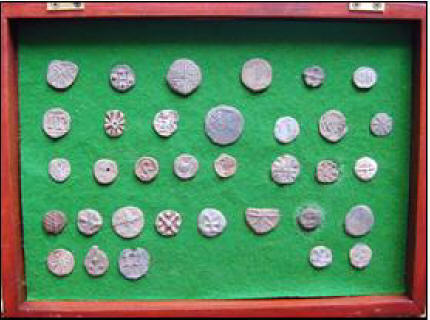 |
|
This display of leaden tokens
was made by Dennis Brown, the
club chairman. The display case
is hinged and in two parts,
firstly the top half is a frame
with glass (not shown) that
closes onto the display half
shown above.
*** |
MIDLAND RAILWAY BUTTON
|
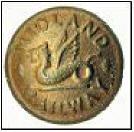 |
This button was found by Paul Wigginton on a
recent club search. It is a uniform button
issued by the Midland Railway which ran in Great
Britain until 1923. A Wyvern, the emblem of the
Midland Railway, is in the centre of the button.
The wyvern is similar to a European dragon, but
it differs in that it has only two legs and has
a barbed, or snake like tail. It is said to be
smaller than a dragon and sometimes to be able
to breathe fire. In heraldry, it represents
pestilence, conquest, or other such ideas.
*** |
GREAT SEAL OF
THE KING OF ENGLAND
HENRY 111 1216 - 1272
|
|
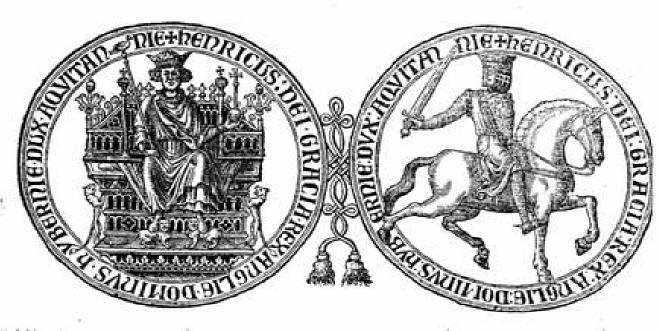 |
|
